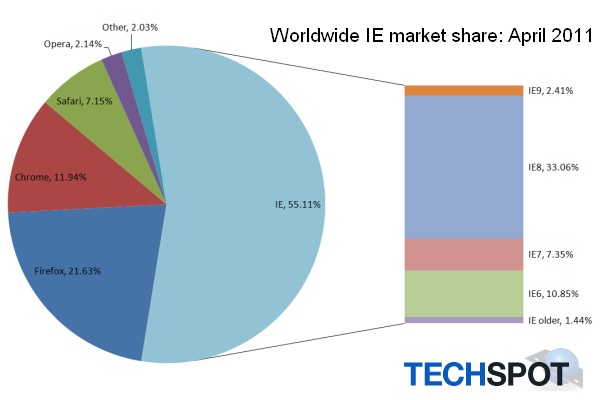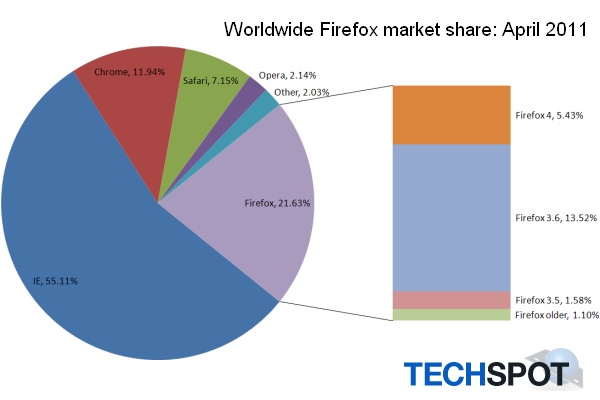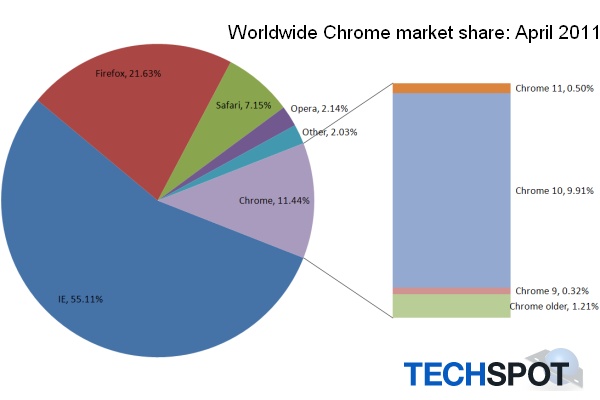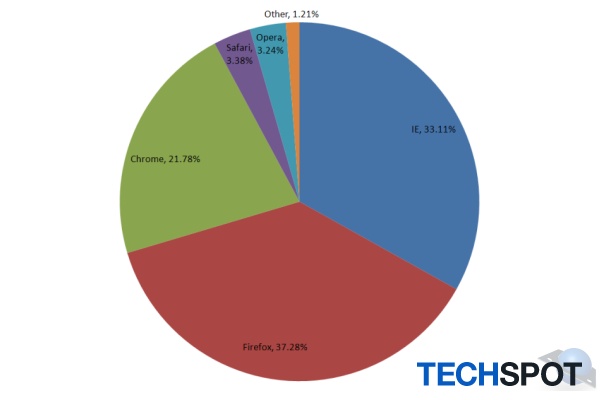With IE9, Firefox 4, and Chrome 11 all out, the second browser war is only getting fiercer. Let's take a look at the market share numbers for last month.
Between March and April, Internet Explorer dropped 0.81 percentage points, just a bit less than the previous month. Firefox, meanwhile, dipped 0.17 percentage points, losing what it gained in the last two months. Chrome meanwhile gained 0.37 percentage points. Safari was up 0.54 percentage points, making it last month's biggest winner. Opera lost 0.01 percentage points.

At 55.11 percent, Internet Explorer has once again hit a new low. IE9, the latest and greatest from Microsoft, last month captured 2.41 percent of the market. IE8 lost 1.35 percentage points, but it's still the world's most popular browser. IE7 fell 0.52 percentage points and IE6 fell 0.12 percentage points. We're hoping that IE6 will fall below the 10 percent mark in the next few months.

At 21.63 percent, Firefox is still below the peak it reached last year (24.72 percent). It appears that Firefox 4 is not (yet?) helping Mozilla regain overall market share. This is despite the fact that Firefox 4 last month captured a whopping 5.43 percent of the market. Firefox 3.6 lost 3.66 percentage points and Firefox 3.5 lost 0.15 percentage points.

At 11.94 percent, Chrome has hit a new high. The browser's built-in updating system is working wonders for Google. Chrome 11 managed to only capture 0.50 percent (it was released towards the end of the month), but Chrome 10 gained 3.32 percentage points. Chrome 9 fell 3.17 percentage points.

The data is courtesy of Net Applications, which looks at 160 million visitors per month. As you can see above, the situation at TechSpot is quite different.